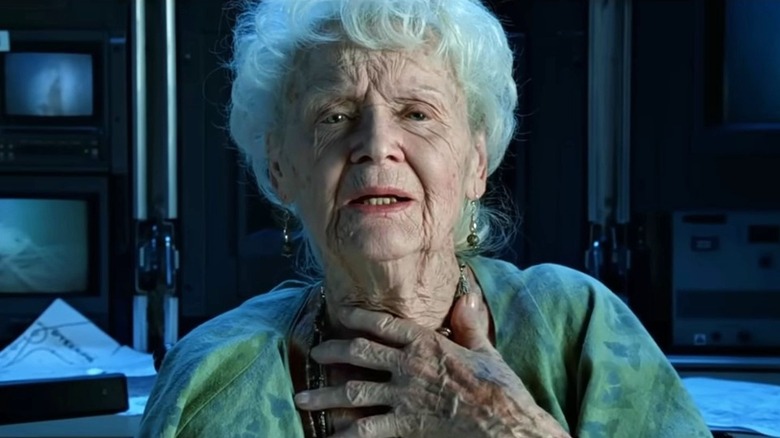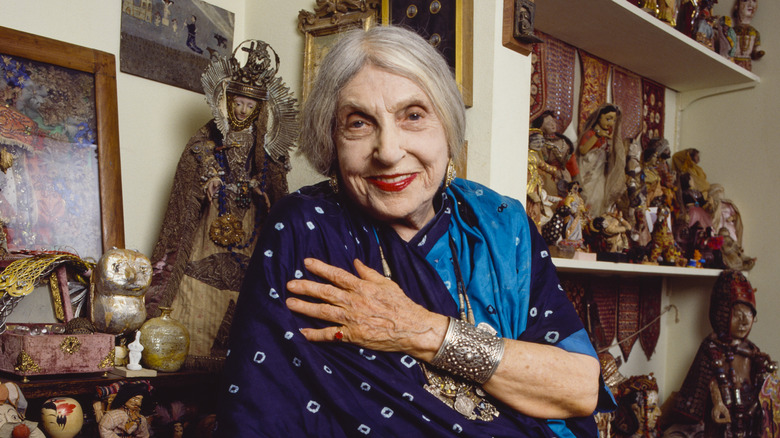Rose From James Cameron's Titanic Was Partially Inspired By This Real-Life Artist
We may receive a commission on purchases made from links.
Much in the way writer-director James Cameron's 1997 global blockbuster "Titanic" is a fictional story set amid the tragic historical sinking of the ocean liner, some of its characters were created for the film while others existed in real life.
For example, Bernard Hill's character, Captain Edward Smith, was in reality the captain of the Titanic during its fateful maiden voyage, which included such real-life passengers as Kathy Bates' Molly Brown. On the flip side, the characters who anchored the core narrative — Jack Dawson (Leonardo DiCaprio) and Rose DeWitt Bukater (Kate Winslet) — were crafted by Cameron for the film's screenplay.
Despite being a fictional character, the older version of Rose (Gloria Stuart) was partially inspired by a real-life avant-garde artist and studio potter Beatrice Wood, according to Biography. In the 1998 book "Titanic: James Cameron's Illustrated Screenplay," the filmmaker detailed how Wood came into play when he created Old Rose — as she's billed in the credits — for the film: "Beatrice was proof that the attributes of Rose's character that I thought might have been perceived as far-fetched were not."
Wood's background was similar to Rose in "Titanic" in that the artist's dominant mother held sway over her until she made the fateful decision to break free from her wealthy family at age 17 to become an artist. "I left home, a luxurious home, with $15, to be free, and I went through a few years understanding the word poverty," Wood said in a retrospective interview Firstpost published in April 2012, a month after the artist died at age 105. "But I was free. And freedom means a great deal to me."
Cameron spent time with Wood when developing the character of Rose
James Cameron learned of Beatrice Wood when Louise Newbury — the wife of the filmmaker's late collaborator Bill Paxton — gave the filmmaker Wood's autobiography "I Shock Myself." Cameron, in turn, was startled by Wood's similarities to Rose. "The first chapter describes almost literally the character I was already writing for Old Rose, the filmmaker said in "Titanic: James Cameron's Illustrated Screenplay."
As such, VC Star reported, Cameron spent some time with Wood to learn about her life. "When I met her she was charming, creative, and devastatingly funny. And her memory of her teenage years was extremely lucid," the filmmaker wrote in "Cameron's Illustrated Screenplay."
That, however, is where the similarities between Wood and Rose end. In another section of "Cameron's Illustrated Screenplay" not written by the filmmaker, the book noted, "The film's Rose is only a refraction of Beatrice, combined with many fictional elements. James Cameron pays homage to her in the opening scene of his [1997] film Titanic. We see the film's heroine making ceramics, one of Beatrice Wood's favored mediums." The character's name, the book noted, came from one of Cameron's grandmothers, who was named Rose.
While Leonardo DiCaprio's Jack Dawson was completely fictionalized, there was apparently a J. Dawson listed on the real "Titanic" passenger list. The publication clarified, however, that J. stood for Joseph. The character felt real to "Titanic" fans, though, and his death after slipping from a floating door in the frigid Atlantic created one of the most controversial movie endings of all time. Countering fans, Cameron got scientific to prove Jack really had no chance on that door.

